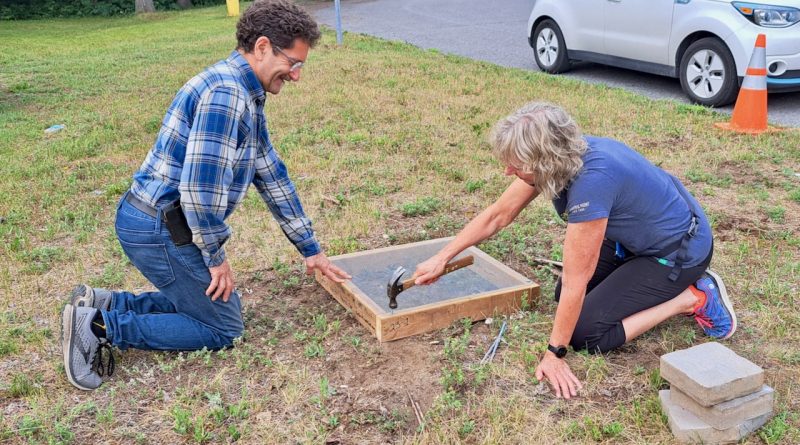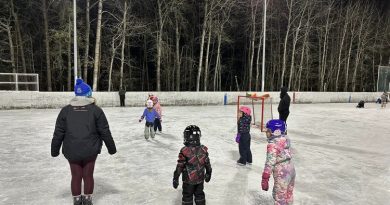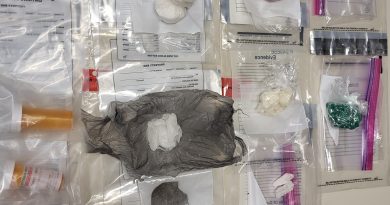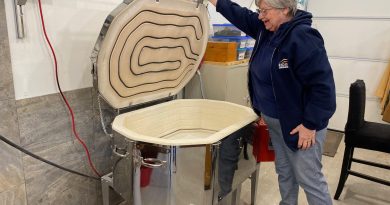FCH saves more than 300 turtle hatchlings in 2023
CARP – The Friends of the Carp Hills (FCH) are equally as chummy with the turtles that call the area home.
One of the FCH’s biggest efforts is turtle protection, and the environmental organization was responsible for protecting more than 300 turtle hatchlings and returning them to their homes.
“From August through September, 74 Blanding’s and 284 Snapping turtle hatchlings from the Carp Hills, Carp, and Dunrobin areas swam into their home waters for the first time,” the FCH released in a statement Tuesday (Jan. 23). “These baby turtles were lucky. They survived the most critical period in their young lives, from laid egg to hatchling, because they were protected by the FCH and our volunteers in partnership with the Canadian Wildlife Federation (CWF).”
The Province of Ontario lists seven of its eight turtles as Species at Risk due to loss of habitat, road mortality, and increased predation of nests. Three turtle species make the Carp Hills home including the Blanding’s turtle, Common Snapping turtle, and Midland Painted turtle.
“We focused our conservation efforts on Blanding’s turtles (threatened in Ontario, endangered in Canada) and Snapping turtles (special concern),” the FCH said. “Blanding’s turtles can take more than 20 years to reach reproductive age and they lay a small number of eggs (usually 10 to 15) compared to Snapping turtles (usually 25 to 35).”
One way to improve the odds is to protect the eggs in turtle nests so predators can’t eat them.
“Our experience confirms the predation threat,” the FCH said. “Our turtle monitors recorded 60 predated nests. They observed racoons waiting in popular turtle nesting sites for turtles to finish laying eggs. Monitors often waited for a turtle to finish laying in order to quickly slap a protector over the nest. Last year one monitor chased off racoons from hassling Blanding’s turtles while they were laying.”
This was the second year the FCH ran its turtle conservation program.
“Based on lessons learned from 2022, we made some changes,” the FCH said. “We expanded the area driven by our turtle monitors, adding more roads where high turtle activity had been reported in 2022. We added a night shift after dark, where monitors drove specified roads looking for laying turtles. We added trained volunteers in high turtle activity neighbourhoods who worked with other residents to protect turtle nests.”
All these changes resulted in a threefold increase in Blanding’s turtle eggs protected compared to 2022 (80 versus 26 eggs). Blanding’s turtles typically lay eggs in the dusk and in the dark.
“We recorded 15 Blanding’s turtles found dead on roads in the Carp Hills and Dunrobin areas in June,” the FCH said. “Seven of these were females containing unlaid eggs. Thirteen of the eggs were considered viable and sent to the Ontario Turtle Conservation Centre in Peterborough for incubation. They will be released near their original nest location in summer 2024.”
In August, one monitor reported two dead Blanding’s turtle hatchlings on a road. In July FCH shared the turtle mortality information with the City of Ottawa.
“We used Google Earth to map the roadkill locations and colour-coded the turtle species,” the FCH said. “Three specific areas on two roads were responsible for 11 of these deaths. There is no turtle fencing at these locations.”
City staff replied quickly to the email, indicating they would look for upcoming roadwork projects in the high mortality areas.
“Installing turtle fencing is expensive,” the FCH said. “It’s often paid for by developers looking for compensation activities for habitats they’ve destroyed elsewhere. “It takes a village, so says our turtle champion John, extending the proverb about raising a child in a safe and healthy community environment to how his neighbourhood came together to protect turtles and their eggs.”
West Carleton residents stepped up to volunteer, send emails about turtles laying eggs, help turtles cross roads safely, and place protectors over nests on their properties.
“Many thanks to our Turtle Monitors (Rachel, Ian, Jennifer, and Carole) who drove roads morning, evening, and in the dark of night to find turtles who needed help,” the FCH said. “Thanks to our Turtle Champions (Helen, Jeff, John, Bernard) for their work mobilizing their neighbours to protect turtles. Heartfelt gratitude to Dave Seburn and staff at the Canadian Wildlife Federation (CWF) for their turtle conservation work in the Ottawa and surrounding areas. And a big thanks to the Bell family for their donation that made this project possible. You are all making a difference.”
Turtle stats based on species
Blanding’s turtles:
- Due to their Threatened status, all Blanding’s turtle eggs were collected.
- CWF collected 80 eggs from seven nests that were protected in the Carp Hills and Dunrobin areas from June 10 through June 26 by FCH monitors and neighbourhood champions.
- CWF incubated the 80 eggs at their facility in Kanata.
- Seventy-four eggs successfully hatched (93 per cent success).
- From Aug. 13 to Aug. 25, we released the 74 hatchlings in ponds close to their original nest location.
- Fifteen Blanding’s turtles were found dead on roads in the Carp Hills and Dunrobin areas in June.
- Seven of these were females containing unlaid eggs.
- Thirteen of the eggs were considered viable and sent to the Ontario Turtle Conservation Centre in Peterborough for incubation. The OTCC will raise the hatchlings from these eggs for one year. They will be released near their original nest location in summer 2024.
- Subsequently on Aug. 30, two dead Blanding’s turtle hatchlings were found on the road in the Dunrobin area.
Snapping turtles:
- CWF collected 37 eggs from two nests that were protected in the Carp Hills and Carp River areas on June 8 and June 13 by FCH monitors and neighbourhood champions.
- CWF incubated the 37 eggs at their facility in Kanata.
- 25 eggs successfully hatched (67 per cent success).
- On Aug. 21 we released the 25 hatchlings into a pond or the Carp River close to their original nest location.
- Seventeen nest protectors were placed in the Carp Hills, Carp River, and Dunrobin areas from June 6 to June 26. The protectors were left on the nests for the eggs to incubate naturally.
Data from 16 protected nests:
- We excavated the protected nests in September through Nov. 2 to determine the success rate.
- Fourteen nests had evidence of eggs.
- 364 eggs were protected. Of these, 259 successfully hatched (71 per cent success).
- Of the 259 that successfully hatched, there were 27 live hatchlings found still in the nests. The hatchlings were released near their nest location.
- There were six dead hatchlings found still in the nests.
- One protector looked like it had been moved with human intervention. No nest found. Status of original nest location unknown.
- One protector was either hit by a car or vandalized. No nest was found.
- One small, very young Snapping turtle was found dead on the road in June.
- Fifteen viable eggs from a predated nest were sent to the Ontario Turtle Conservation Centre in Peterborough for incubation. The OTCC will raise the hatchlings from these eggs for one year. They will be released near their original nest location in summer 2024.
Painted turtles:
Five Painted turtle eggs were collected and incubated based on being mistaken by a resident for a Blanding’s turtle. The oval eggs are quite similar although Painted turtle eggs tend to be a bit smaller. Three of the eggs hatched and the hatchlings released in home waters.













